How can AI accelerate the measurement of the building’s carbon impact?
In the near future, better management of carbon expenditure will require systematic measurement of project impacts
The construction market is increasingly regulated to be in line with the French National Zero Carbon Action Plan (SNBC). For new-builds, the RE2020 regulation, which came into effect in January 2022, is implemented in several phases. Until 2025, we are in phase 1 of this plan, with the initial step aiming to introduce measures for new construction without overly limiting construction methods.
Subsequently, the goals will be increasingly ambitious for the carbon budget of projects and environmental innovation will be unavoidable. The regulations are also intended to play an educational role so that the market may apply these best practices to other types of projects, especially in renovation involving many more operations.
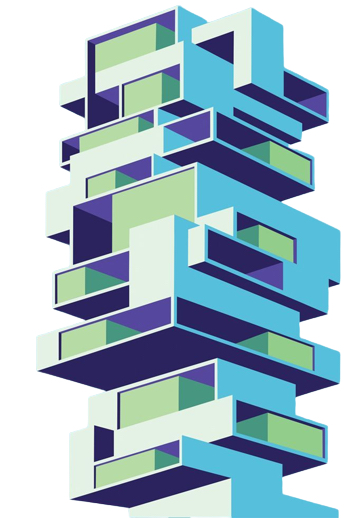
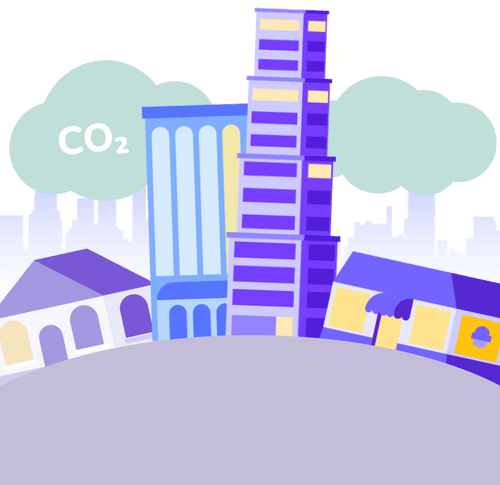
The construction sector is the second largest emitter of greenhouse gases in France. To make an impact, it is necessary to measure the best way to calculate the environmental footprint and to follow a life cycle analysis of all building components. This consists of tracking each material and logistical stage from the construction phase to the end of life (construction materials, equipment), and including the operating phase (heating, domestic hot water, air conditioning, lighting, etc.).
However, for construction companies, carbon analysis and optimization of a quote is now one of the most laborious steps in preparing a tender. Until recently this analysis was almost systematically outsourced due to time constraints, pre-required expertise and insufficient allocated budget. It is now at the heart of concerns to justify project control.
Contractors realize that soon, proposing variants or additional work without explaining the environmental impact will no longer be possible, and that it will be essential to have control over these concepts. At Nooco, since the outset, we have set ourselves the mission of making it possible to calculate the carbon footprint of your projects, and to optimize the choice of materials and equipment quickly and in full autonomy.
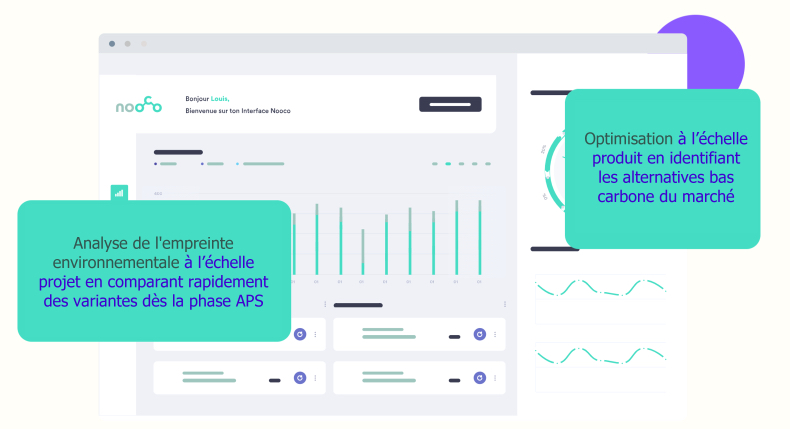
Without a suitable digital tool, this process becomes burdensome for our customers’ teams and can take up to several days of work. Excel tools have been designed to go faster and run macro estimates, but tend to reduce reliability through unenforceable hypotheses. This approach is problematic because it means that, between 2 competing contractors presenting different results, understanding the difference requires a detailed analysis of what justifies it, between reality and method. We therefore lose any time previously saved.
To achieve this, we had to overcome a major challenge, since systematic measurement means being able to adapt to all types of projects. This implies not imposing a BIM model or a working format.
We do not wish to deny ourselves the interface option that remains the most efficient when possible. So to deal with the vast majority of cases, we had to find a quick solution to recognize and process different file formats with a vocabulary specific to each contractor. Unsurprisingly, the solution we chose was to develop our own artificial intelligence models, specialized in the building trade.
Find the right support to make sure you’re heading in the right direction
After delivering a first version in October 2021, we decided to dive deeper into the technology available on the market following our selection in Leonard’s AI program, VINCI’s projective and innovation platform.
6 months of projects supported by experts to improve and weigh up state-of-the art systems.
To start with, it is necessary to look back at calculation principles.
Doing an environmental calculation in real life is based on a fixed-price contract (DPGF), a BIM model, measurements,… and, roughly speaking, for each material and equipment, we calculate the sum-product of the carbon information by the quantity. To optimize the impact of a project, we therefore start from a phase of understanding quotes and we then optimize the choice of materials and equipment using certified databases (NB in France: INIES).
In carbon accounting, as in conventional accounting, there is a precautionary principle. We will therefore define the principle of upper and lower limits:
- High limit: “if I don’t know, I will consider that my product is made from new materials and is manufactured in a country with a rather high electrical mix”
- Low limit: “one or more manufacturers have checked that their product is made from x% recycled materials and is manufactured in a country with a great electric mix (randomly, in France 😊)”
- Ultra-low limit: “my product comes from a recycling sector”
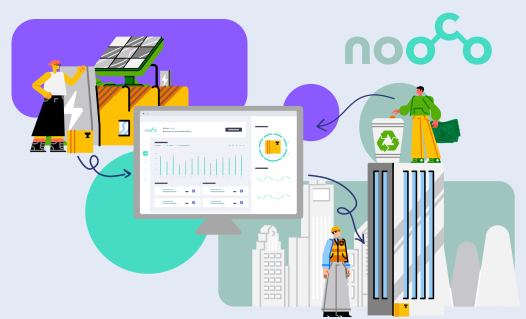
AI to support users: saving time without diminishing reliability.
For the novice users, AI brings together all the statistical methods that make it possible to reproduce, at least partly, the result of human behavior (e.g. analyzing images, text, etc.).
Modern methods of text analysis, known as Natural Language Processing, make it possible to automate the synthesis of complex documents, whether in the form of information extraction or classification of technical tools from their description.
HuggingFace, the state-of-the-art open source language processing system, makes it possible to understand French, so it will identify that a spherical balloon is round. However, it does not know construction vocabulary and is unable to know that a partition or a wall are similar, that the duct is in the aeraulic network or even what a baseboard is.
Of approximately 8,500 hours spent in R&D (reported and verified), we have therefore devoted nearly a third of that time teaching AI building trade vocabulary and have developed our own learning overlay, specific to construction and industry.

Thanks to the development of cutting-edge AI, the customer quote analysis phase on Nooco now takes just under an hour for 500 lines (reminder: several days using traditional market tools). The performance of our algorithm has thus evolved from 8% recognition at its launch in September 2021, to 58% today.
This learning process is scalable since we have also implemented a process for collecting AI errors. When a user does not validate an AI proposal, there are 2 possibilities: either this event occurs several times and the algorithm learns alone from its error, or our customer contacts us and we inform the algorithm that it has misinterpreted a new term.
In other words, the more Nooco is used, the faster the environmental calculation will be, and tomorrow it may even be automatic and interface-free!
The proven ability of AI to strengthen software power convinced us to reinforce our Data Science teams and we are working on 2 other essential algorithms to support decision-making in construction, i.e. the CO2 indicator is just one of many decision-making tools.
- Reading technical and environmental records: data is currently unstructured in these records and gathering all the information on a product is extremely time-consuming. Our AI trained in construction vocabulary now allows us to quickly extract information from product data records in order to promote and simplify access to this information.
Once the algorithm knows what to look for – in this case, the technical characteristics of a given product – it is very effective in finding this information in the document through the Question-Answering method.
For example, for an insulator, environmental information such as its thermal resistance, its fireproof capacity and its type of material will quickly be collated. For a floor its UPEC classification, for a heat pump its type of fluid, etc. - The optimization potential of a project: what is the gap between the high limit and the low limit of a project? What costing effort is needed to move towards this low limit? AI as a means of supporting specification is no longer a myth, but it will remain a decision-making tool because the building trades demand understanding of much more complex issues than simple carbon-price matching.
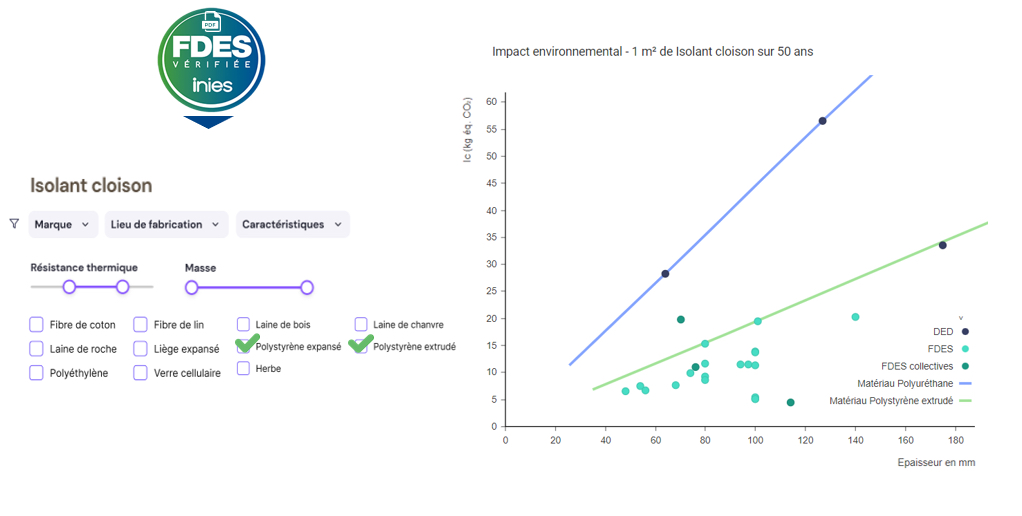
Construction companies acknowledge their contributions to environmental challenges as well as their role in devising solutions. In this period of new government, they are undeniably strongly committed to changing their businesses and giving themselves the means to transform.
Construction companies acknowledge their contributions to environmental challenges as well as their role in devising solutions. In this period of new government, they are undeniably strongly committed to changing their businesses and giving themselves the means to transform.
The market will only become a vehicle of environmental transition once contractors are capable of simply competing on the CO2 outcome and of giving decision-makers full transparency on the indicator.
By speeding up measurement, AI indirectly contributes to reducing a considerable volume of emissions.
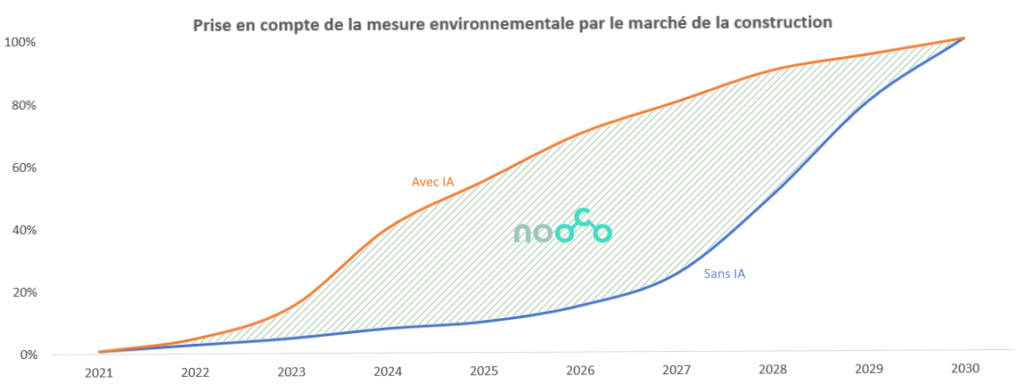
Want to learn more about the technical aspects or just test the solution? Contact us!


